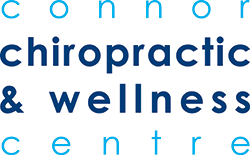Unleashing the Triathlete’s Potential.
Triathlon, a grueling combination of swimming, cycling, and running, demands peak physical fitness and mental resilience. As triathletes push their limits, the risk of injuries looms large. In this comprehensive guide, we explore the best strategies to prevent injuries in triathletes, covering training volume and intensity, tapering, strength training, as well as the transformative benefits of massage therapy and chiropractic care.
1.Smart Training for Triathletes: Balancing Volume and Intensity
a) Gradual Progression: One of the cardinal rules in triathlon training is gradual progression. Sudden spikes in training volume or intensity significantly elevate the risk of overuse injuries. A well-structured training plan, incorporating progressive increases, allows the body to adapt and reduces the likelihood of strain.
b) Periodization: Implementing a periodization approach divides the training season into distinct phases, each with specific objectives. This technique helps prevent burnout and reduces the risk of overtraining injuries. Periods of focused intensity are interspersed with recovery phases, providing the body with essential rest and repair.
c) Cross-Training: Diversifying your training routine minimizes the repetitive stress on specific muscle groups and joints. Incorporate activities like swimming, cycling, and running to engage different muscle sets, promoting overall strength and resilience.
2. Tapering: Fine-Tuning for Peak Performance
Tapering is a crucial component of a triathlete’s training cycle. It involves a reduction in training volume and intensity leading up to a race, allowing the body to recover and reach peak performance. Tapering alleviates accumulated fatigue, reduces the risk of overuse injuries, and enhances glycogen stores. It also provides mental rejuvenation, sharpening focus and mental resilience for race day. The duration of tapering varies based on individual factors, race distance, and training intensity. Generally, a tapering period of two to three weeks before a major event is effective. Fine-tune your tapering plan based on how your body responds to reduced training loads.
3. Strength Training: Building Resilient Bodies
Strength training is a cornerstone in injury prevention for triathletes. Building muscular strength and endurance not only enhances performance but also fortifies the body against the repetitive stress of triathlon disciplines. While training you are able to address muscular imbalances that may develop through endurance training. Targeted strength training reduces the risk of overuse injuries which helps develop symmetrical movement patterns. In addition to strength training, a strong core that helps facilitate efficient energy transfer, will help during all three disciplines.
4. Massage Therapy: Unwinding the Tensions
Massage therapy is a valuable tool in the triathlete’s toolkit. It enhances flexibility, reduces muscle tension, and promotes efficient blood circulation, all contributing to injury prevention. Triathletes often encounter tightness and restrictions in the fascia, the connective tissue surrounding muscles. Myofascial release techniques used in massage therapy address these restrictions, promoting optimal range of motion and reducing injury risk. Because of this, regular massage sessions play a pivotal role in the recovery process. By aiding in the removal of metabolic waste products and reducing inflammation, massage therapy expedites muscle recovery and mitigates the risk of overuse injuries.
5. Chiropractic Care: Aligning for Optimal Performance
Chiropractic care is an integral component of injury prevention for triathletes. Chiropractors focus on joint range of motion the spine and extremities and help optimize joint movement. Athletes often find that as their training volume increases, so does the demand on their muscles and joints. Chiropractors address the joint restrictions, and muscle imbalances that may compromise function and lead to injuries. Adjustments help correct and address joint restrictions and the effect they have on the surrounding tissue. These adjustments can help promote proper mechanics overall.
6. Comprehensive Warm-up and Cool-down Routines
Prioritize dynamic warm-up routines to prepare the body for the specific demands of each discipline. Dynamic stretching, light jogging, and sport-specific movements increase blood flow, warm muscles, and improve joint flexibility. When workouts are complete it’s also important to dedicate time to cool-down activities. Gentle jogging, followed by static stretching, helps prevent muscle stiffness and may enhance flexibility. Incorporate stretches that target major muscle groups used in swimming, cycling, and running.
7. Listen to Your Body: The Ultimate Injury Prevention Tool
Triathletes must be attuned to their bodies. Persistent pain, fatigue, and changes in performance can be warning signs of potential injuries. Ignoring these signals can lead to more severe issues, so listen to your body and seek professional advice when needed. When it comesRest and recovery are non-negotiable components of injury prevention. Allow the body sufficient time to recuperate between intense training sessions. Quality sleep, hydration, and proper nutrition are foundational pillars for optimal recovery.
Conclusion: Empowering Triathletes for Longevity and Success
In the challenging realm of triathlon, injury prevention is not a luxury but a necessity for sustained performance and longevity. By embracing a holistic approach that incorporates smart training practices, targeted strength training, massage therapy, and chiropractic care, triathletes can fortify their bodies and minds for the demanding journey that lies ahead. Remember, the key to success is not just reaching the finish line but doing so with a body that is resilient, balanced, and capable of embracing the challenges of the next race.


